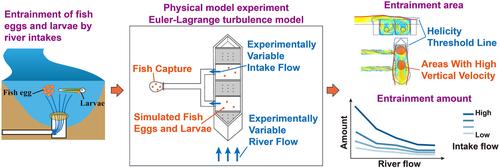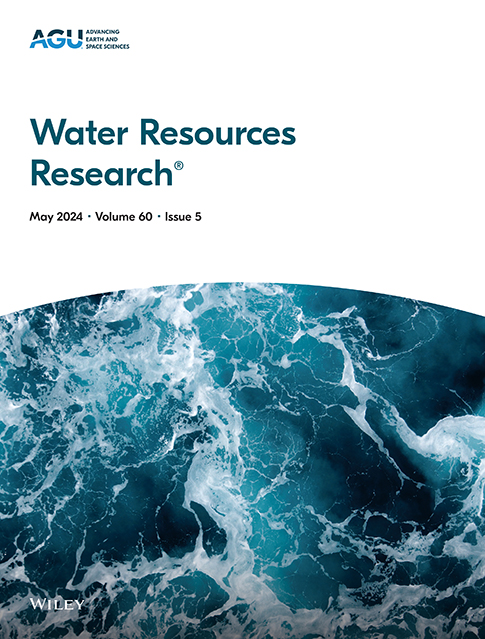Estimated Hydraulic Characteristics and the Entrainment of Fish Eggs and Larvae at a Pumped River-Water Intake
IF 4.6
1区 地球科学
Q2 ENVIRONMENTAL SCIENCES
引用次数: 0
Abstract
Withdrawal of fish eggs and larvae through a river intake (entrainment) may damage the river's early fish resources. To investigate how the hydraulics (flow velocities, directions, and magnitudes) around and within the water intake structure influence entrainment, this study focused on a typical river-pump intake. A turbulence model was developed based on the Euler-Lagrange method and the variable of helicity was introduced to define the zone of the river from which water is withdrawn and organisms are entrained. The process of simulated hydraulics on organism withdrawal was validated by physical experiments using artificial fish eggs under various river flow and intake flow conditions. The simulated results indicated that when the intake-to-river flow ratio ranged from 3 to 7‰, the width of the planar entrainment area was approximately 1.2 to 1.4 times the width of the intake structure, and the entrainment quantity of fish eggs and larvae accounted for 0.12% to 0.49% of the incoming flux. The entrainment quantity increased with the intake flow to the river flow ratio. The absolute helicity threshold under different conditions ranged from 0.004 to 0.047 m/s2, which was inversely proportional to the intake flow rate and unaffected by river flow and water depth. An optimized intake structure design with stepped side walls was promoted, which can minimize the impact of river sedimentation and reduce the fish entrainment quantity by an average of 11%. This research provides valuable insights for water intake safety and fish resource protection.

求助全文
约1分钟内获得全文
求助全文
来源期刊

Water Resources Research
环境科学-湖沼学
CiteScore
8.80
自引率
13.00%
发文量
599
审稿时长
3.5 months
期刊介绍:
Water Resources Research (WRR) is an interdisciplinary journal that focuses on hydrology and water resources. It publishes original research in the natural and social sciences of water. It emphasizes the role of water in the Earth system, including physical, chemical, biological, and ecological processes in water resources research and management, including social, policy, and public health implications. It encompasses observational, experimental, theoretical, analytical, numerical, and data-driven approaches that advance the science of water and its management. Submissions are evaluated for their novelty, accuracy, significance, and broader implications of the findings.
 求助内容:
求助内容: 应助结果提醒方式:
应助结果提醒方式:


